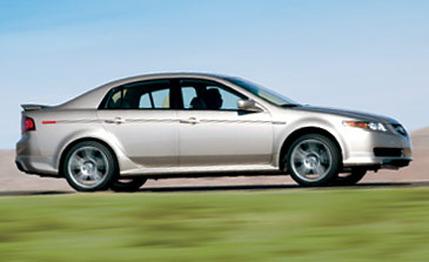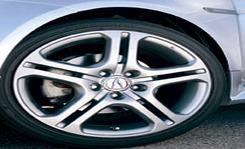 Short Take Road Test
Short Take Road Test
More than most, American Honda is strongly attuned to the burgeoning tuner aftermarket. After all, Honda Civics and Acura Integras are two of the primary touchstones in the whole new-wave hot-rod revolution. So it's no surprise that this automaker, like so many others, is gearing up to turn this grass-roots phenomenon into a profit center with a line of go-faster, look-cooler packages of its own. The Honda Division answered the call with the Honda Factory Performance array, and now Acura is following suit with enhancements marketed under the banner of A-Spec.
The first A-Spec package, designed for the RSX Type-S, made its debut at the SEMA show last November. And now there's a similar package for the TL sedan, an array of goodies conceived to enhance the new car's visual horsepower, as well as its ability to satisfy the owner's inner Michael Schumacher.
There is considerable appeal in having the factory do your development work. No guessing, no shopping, and no possibility of voiding your warranty. On the other hand, there are the inevitable questions: Am I actually getting any real performance gains with this kit? Is it worth the money?

When you're about to shell out almost six large, those are both high-priority questions. Here's a straight answer: Yes on both issues--depending on your expectations. Does that sound equivocal? We'll elaborate. But first, the hardware.
Like a lot of stuff people are attaching to their cars, some of the A-Spec package is devoted to eye candy--the front air dam, the ground-effects rocker panels, the rear spoiler (high wing or decklid, your pick), the A-Spec steering wheel, and the A-Spec badging inside and out. But there is a hard core to the collection--retuned shocks, higher spring rates, and 8.5-by-18-inch aluminum alloy wheels (versus the standard 8.0-by-17s) wearing 235/40ZR-18 95W Yokohama AVS ES100 tires (versus one of two standard Bridgestone tires: all-season Turanzas for automatics, high-performance Potenzas for manual-transmission models). The footprint of the Yokohamas and the Bridgestones is the same, but with an aspect ratio of 40 versus 45, the A-Spec tire has a bit less sidewall, which means less flex, which means better handling response. And those 18-inchers fill the wheel wells, giving the TL an even more aggressive look.
One other A-Spec element is high-performance brake pads, but this is for automatic models only. Regular TLs with manual gearboxes already come with Brembo four-piston front calipers, and the A-Spec team concluded that was plenty, an opinion borne out in our recent sports-sedan comparison (March 2004), where a TL stopped best in test: 160 feet from 70 mph. However, in our test, in cold weather, the A-Spec needed 174 feet to stop.
So, that's the A-Spec inventory. We're sure you've already noticed the absence of any engine enhancements, and in truth, 270 horsepower is more than enough in this car. But in the absence of an output increase, assessing the effectiveness of a package such as this gets to be pretty subjective. The one objective distinction we can provide is skidpad performance, and that distinction is wafer-thin. In the comparo, the standard TL pulled a respectable 0.89 g. The Yokohama-shod TL A-Spec managed 0.90.
The subjective scorecard is a little more decisive. Without getting into a lot of arcane discussion of damping adjustments, the A-Spec setup achieves a noticeable reduction in up-and-down chassis motions over roads with built-in whoop-de-dos, which eliminates the occasional lunging that afflicted the standard TL's responses in our recent test. Roll stiffness has been enhanced, too--cornering attitudes are flatter, and the Acura chassis guys deserve high marks for tightening everything up without a corresponding erosion of ride quality.
What the A-Spec package does not address, however, is the biggest flaw of a TL with a manual transmission, and that's torque steer. Tramp on the throttle in one of the lower gears, and there's still that heavy tug at the steering wheel, particularly on pavement with lots of variations.
So this package merits a mixed review. The components are high quality, and they do enhance performance, although it takes a well-tuned posterior to appreciate the A-Spec. But the problem of feeding high horsepower through a front-drive system is unaffected. Is this worth $5200? Plus about $500 for installation? We take the Fifth. Your money, your call.